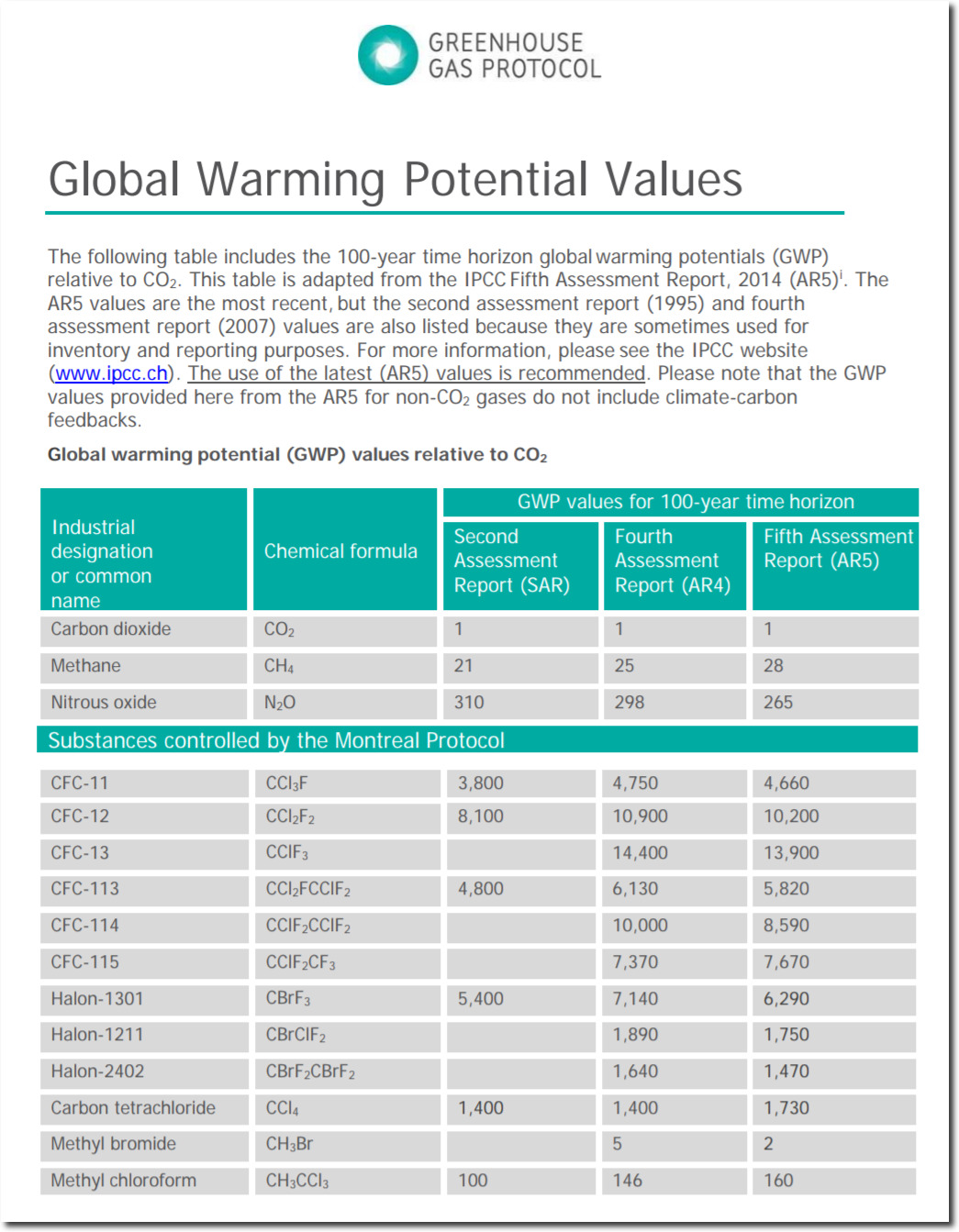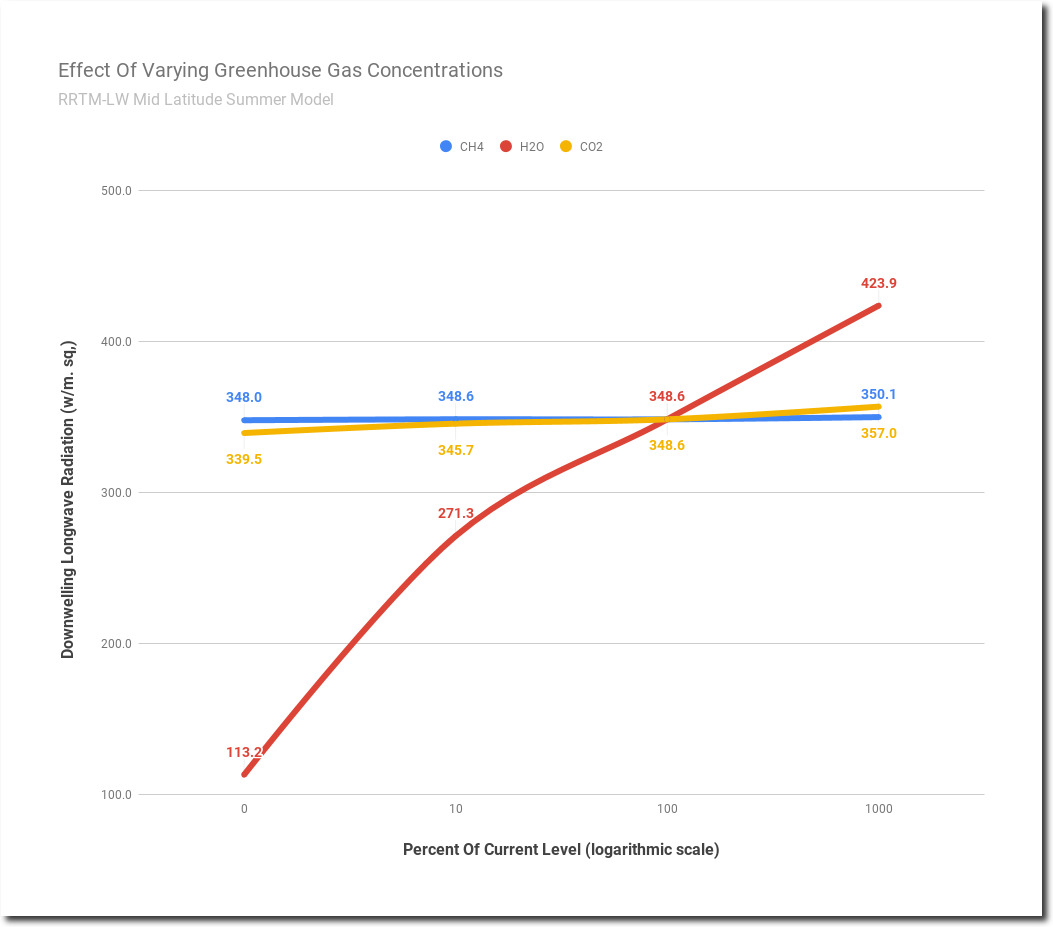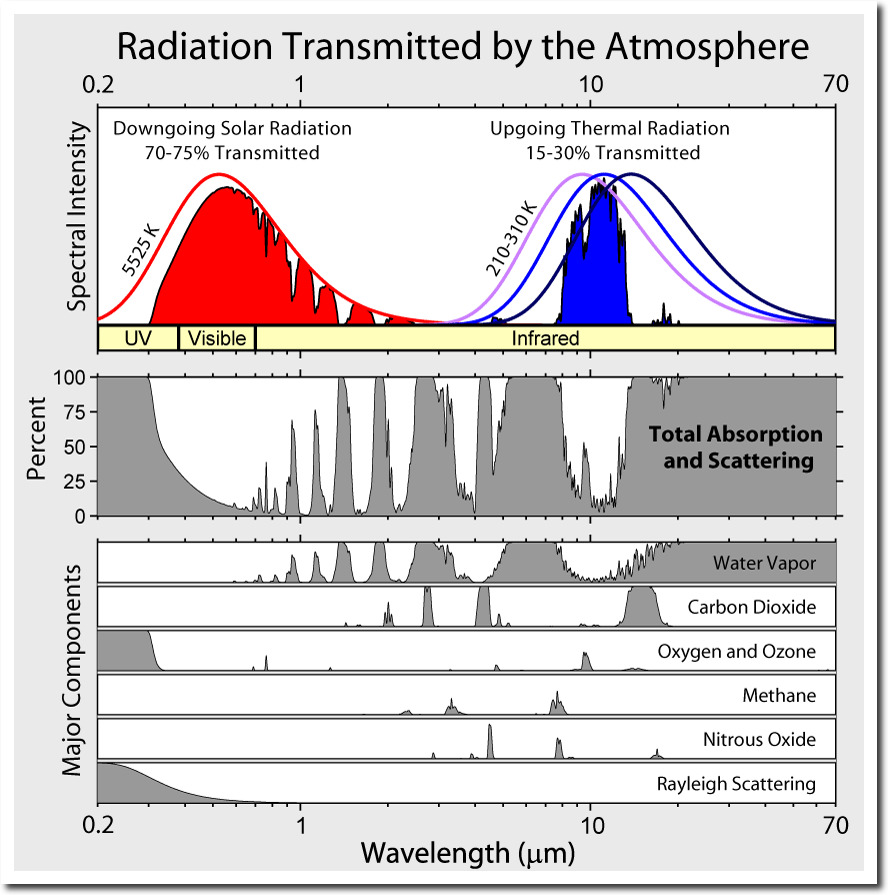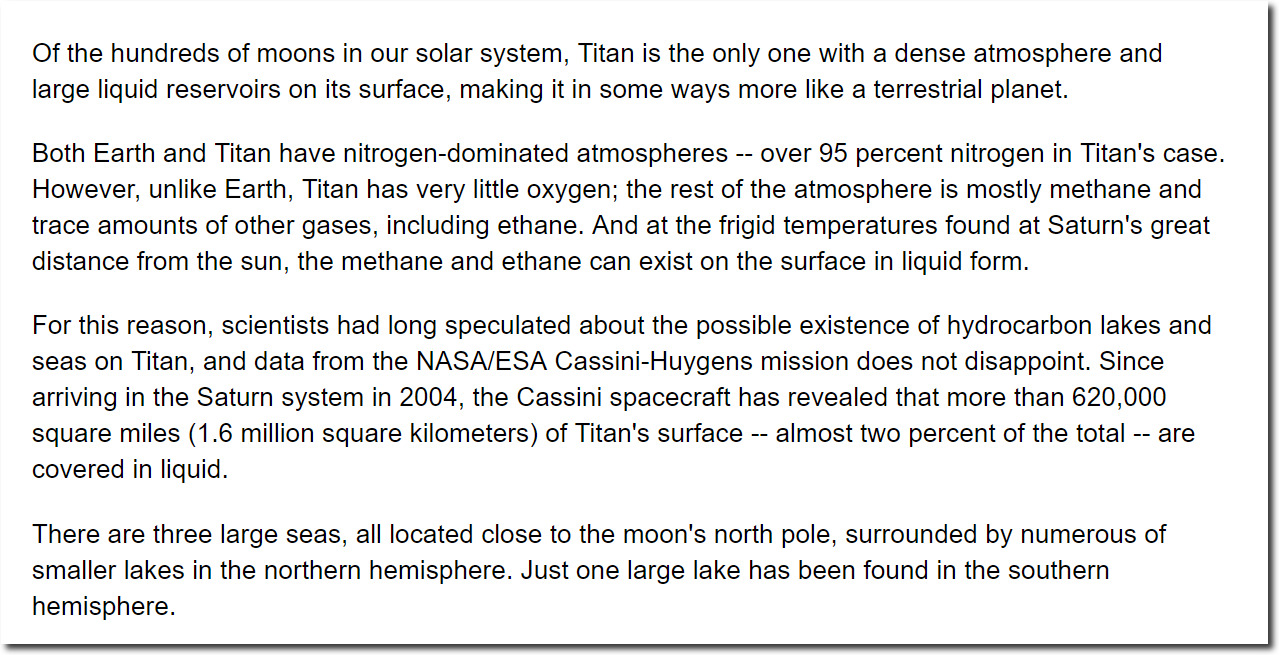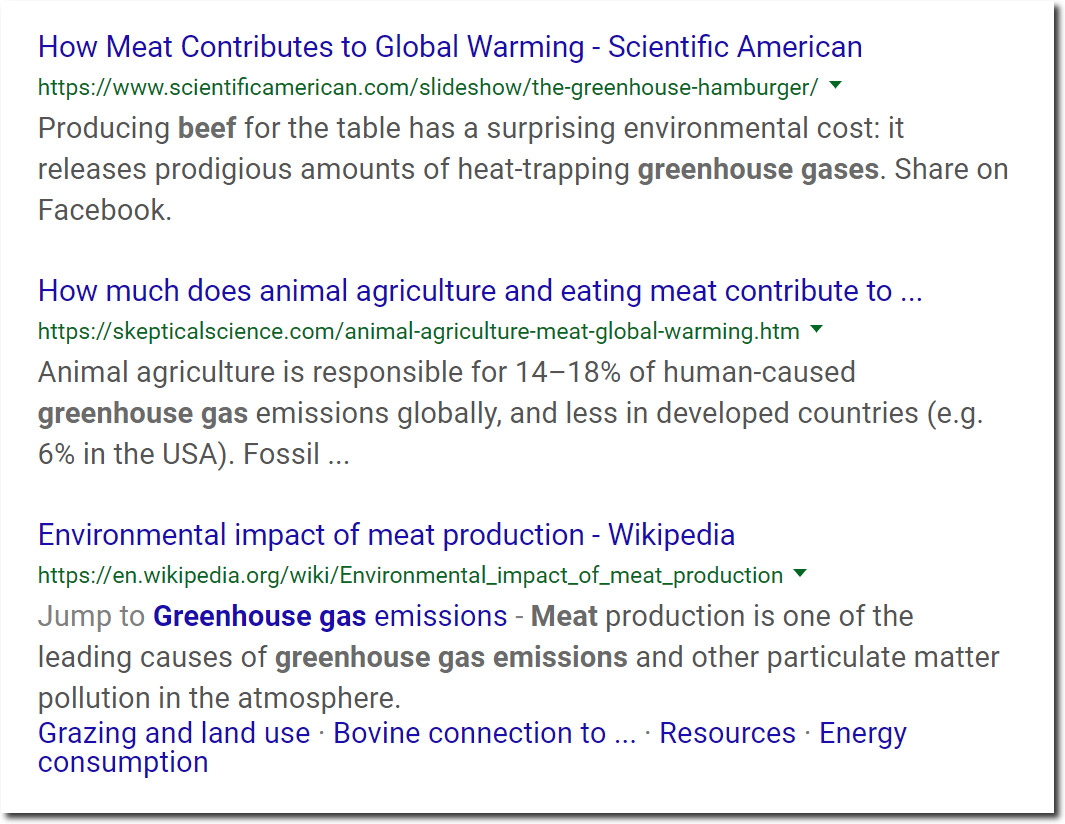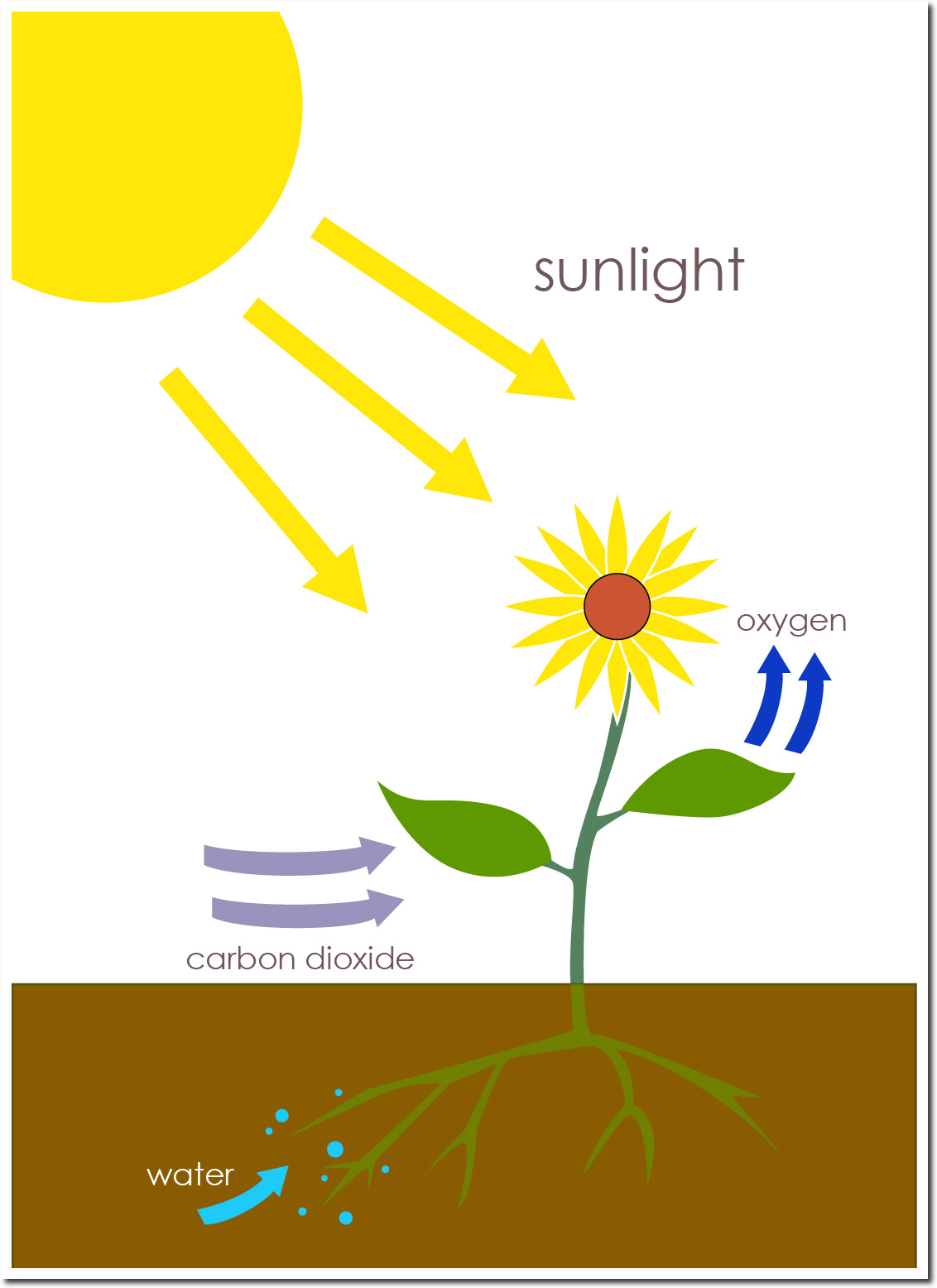Climate alarmists maintain many big lies, but none bigger than their claims about CH4 (methane.) With each successive UN IPCC report, they bump up the “Global Warming Potential” of methane. In 1995, it was 21 times stronger than CO2. In 2007, it was 25 times stronger than CO2, and in 2014, it was up to 28 times stronger than CO2.
Global-Warming-Potential-Values
Also note the absence of H2O in the table above.
It is easy enough to test these claims out using their own models. The graph below was generated using the RRTM-LW model from AER, with their standard mid-latitude summer atmosphere parameters as input. This is the model used by the National Center for Atmospheric Research in their weather and climate models. The Y-axis shows the amount of downwelling longwave radiation (i.e. greenhouse effect) produced by different levels of greenhouse gases in the mid-latitude summer lower troposphere (952 mb.) The X-axis is logarithmic, with four values plotted for each gas.
- 0% of current levels
- 10% of current levels
- 100% of current levels
- 1000% of current levels
Each of the three curves assumes constant (current) values for the other two gases.
Water vapor (H2O) is far and away the dominant greenhouse gas. With no water vapor, the amount of DLWR would be less than one third of its current value.
CO2 is significant, but much smaller than H2O. CH4 (methane) is nearly inconsequential. If you reduce methane by 10X or increase it by 10X, the change in DLWR (downwelling longwave radiation) is small. Claims that CH4 is 28X stronger than H2O are complete nonsense and have no basis in science.
It is easy to see why methane is inconsequential in the spectral diagram below. Methane only has three small peaks, compared with the much larger and broader peaks of H2O and CO2. A good way to estimate greenhouse gas potential is to measure the area under the curve for each gas. The area under the methane curve is quite small compared to the areas under the H2O and CO2 curves.
File:Atmospheric Transmission.png – Wikimedia Commons
But methane has another problem, its peaks line up with H2O peaks, so those spectral bands are nearly saturated.
It is also impossible to build up large amounts of methane in an atmosphere which contains oxygen, because it quickly oxidizes in the presence of oxygen into H2O and CO2. That is why we use it for a fuel. The concentration of methane during mid-latitude summer is a tiny 1.7 PPM, but planets (including Earth) emit a lot of methane. Saturn’s moon Titan has methane seas. The reason Titan is able to hold its methane is because it has almost no oxygen.
Cassini Explores a Methane Sea on Titan | NASA
Earth is nothing like Titan, because we have oxygen. The global warming potential of methane on Earth is thus very small, and is nearly inconsequential compared to water vapor. So why is the IPCC lying about methane? The reason is very simple. They are attempting to restrict meat production by blaming methane emissions on livestock, and scaring people into thinking their cheeseburger will cause hurricanes and rising seas.
I don’t eat red meat, and very little of any other kind of meat. There are lots of good reasons to cut way back on meat consumption, but imaginary global warming is not one of them.
So why do we have oxygen on Earth? Because we have plants, which depend on CO2 to grow and generate oxygen.
Photosynthesis – Photosynthesis – Simple English Wikipedia, the free encyclopedia
By demonizing “carbon gases” CO2 and CH4, climate alarmists are demonizing life itself.
“If you tell a lie big enough and keep repeating it, people will eventually come to believe it. The lie can be maintained only for such time as the State can shield the people from the political, economic and/or military consequences of the lie. It thus becomes vitally important for the State to use all of its powers to repress dissent, for the truth is the mortal enemy of the lie, and thus by extension, the truth is the greatest enemy of the State.”
– Joseph Goebbels

